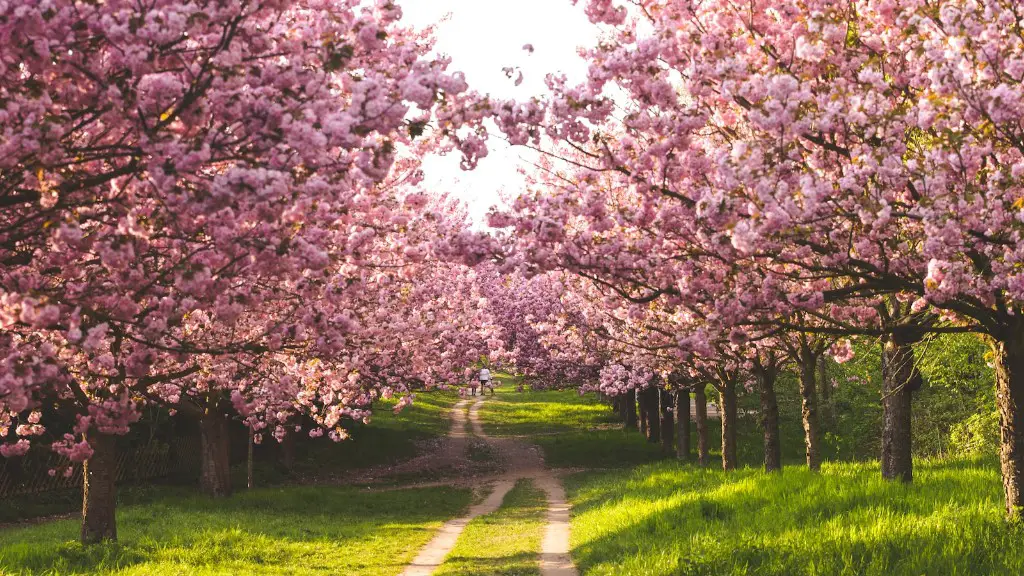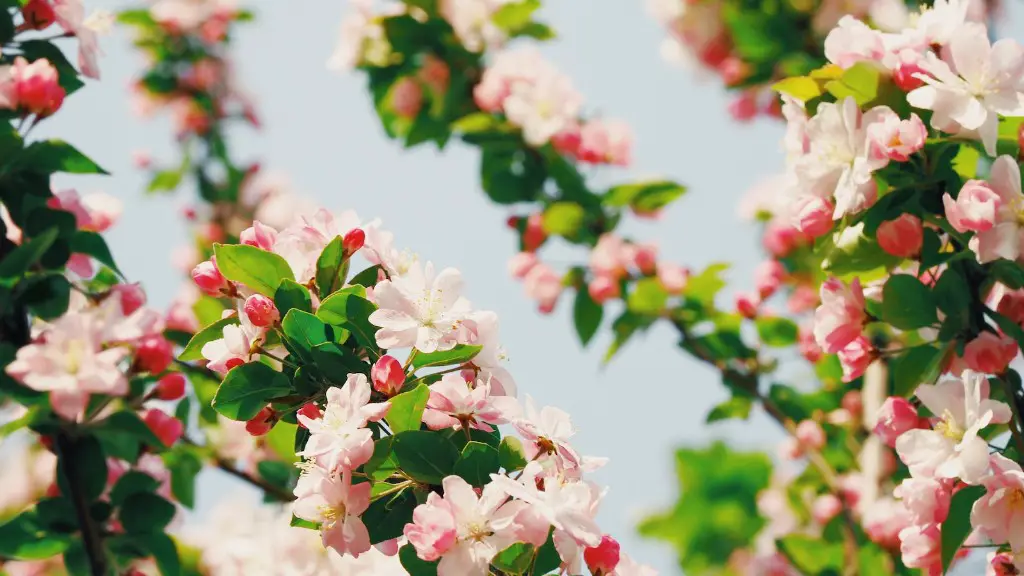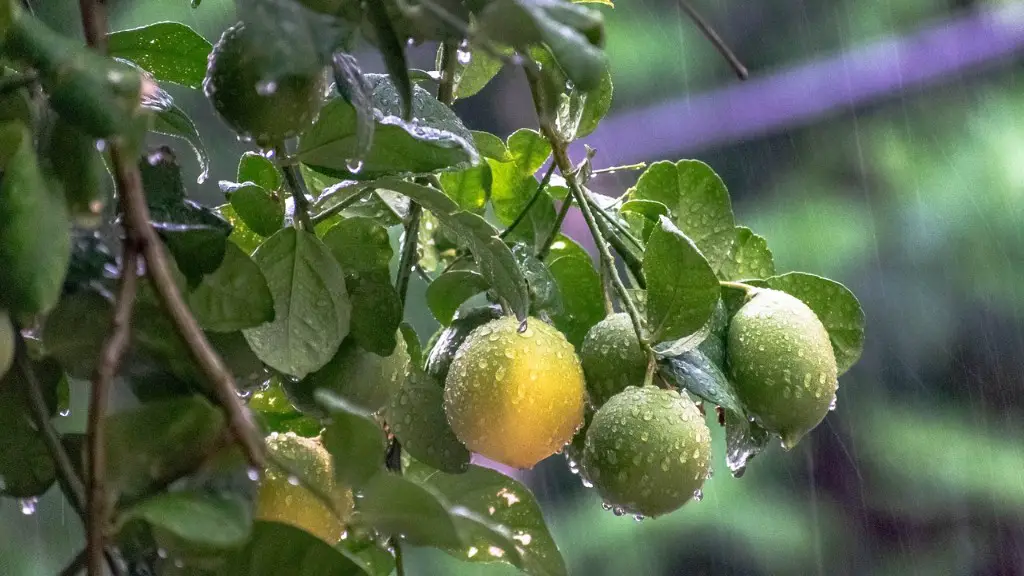Research
Weeping cherry trees are one of the most popular ornamental trees, prized for their elegant form and stunning spring blooms. In order to successfully start and grow a weeping cherry tree, it’s important to understand the species, its needs and how to properly care for it. Before embarking on planting a weeping cherry tree, research is key. Find out what species of weeping cherry will best suit your environment and determine its sun and water requirements. Know your location’s climate and soil type. Ask your local nursery for advice, soil samples or fertilizer recommendations. Determine the planting area and whether it needs to be fertilized or amended.
Prepare
Before planting any kind of tree adequate preparation is essential. Remove any weeds, grass or debris from the area around the weeping cherry, and dig a hole for the tree that is twice as wide and deep as the root ball. This will give the roots enough room to properly spread. Remove any rocks or other debris, and ensure that the soil is well-draining. Work some organic matter into the soil, such as peat moss, to help lock in moisture and nutrients.
Planting
When it’s time to plant, make sure that the roots are facing down, and that the root ball is firmly planted in the ground. If the weeping cherry will be in a pot, select a pot that is sufficiently sized and filled with soil. Once the tree is securely planted, add a thick layer of mulch around the base to protect it during the winter and to lock in moisture during the summer.
Watering
Weeping cherry trees require regular watering in order to thrive. They should be watered deeply and often, ensuring the soil remains moist but not soggy. Water when the soil is quite dry and until the water runs out of the bottom of the pot or onto the ground. Regularly check the soil to make sure it is not drying out and adjust the amount of water accordingly.
Pruning
Pruning is an important part of caring for a weeping cherry tree. Prune it when it is still young so that it grows into its desired shape. Prune it every one to two years and in the late winter or early spring. This will help to encourage healthy growth. To prune a weeping cherry, simply cut off any dead branches and be careful to not remove too much of the live branches, as this can cause die-back.
Fertilizer
Fertilizing a weeping cherry is not necessary for it to thrive, but it can help to maintain the tree’s health and boost its growth. Fertilize it with a slow-release fertilizer appropriate for cherry trees in the spring before it begins to bloom.
Insects and Diseases
Weeping cherry trees are susceptible to a few insects and diseases. Monitor the tree for any signs of distress, such as yellow or browning leaves, defoliation, wilting, discolored sap and curling leaves. If any of these signs are present, contact your local nursery for advice and possible treatments.
Protecting the Tree
To protect your weeping cherry tree from the elements, use a tree wrap around the trunk in the winter to protect it from windburn, sunscald and winter damage, and be sure to cover it with a blanket of snow. A good layer of mulch will help to protect the tree even further.
Pests and Diseases
Weeping cherry trees are prone to a variety of pests and diseases, mainly caused by fungus and bacteria. Common pests that can affect the tree include aphids, scale, borers and spider mites. Monitor the tree for signs of pests or disease and if necessary, and employ appropriate methods of treatment.
Winter Care
Weeping cherry trees are sensitive to colder temperatures and must be protected from the cold during winter months. Make sure the tree is heavily mulched to keep the roots protected and help retain moisture. In areas where temperatures dip below zero, covering the tree with a frost blanket or burlap can also be helpful.
Fungal Diseases
Fungal diseases are one of the main issues that affect weeping cherry trees. The most common diseases are canker, leaf spot and powdery mildew. It’s important to monitor the tree for any signs of disease and seek professional advice for treatment if necessary. Fungicides may be used to protect the tree from disease.
Modifying the Soil
Modifying the soil around a weeping cherry tree is necessary to ensure healthy growth and to help prevent pests and diseases. Adding organic matter such as compost, leaf mulch or peat moss can help amend the soil and improve the soil structure. To ensure optimal soil conditions, conduct a soil test to check for pH levels, nutrient levels and soil drainage.
Pruning for Structure
Young weeping cherry trees will need to be pruned in order to help them grow into the desired shape and size. Pruning should be done in the late winter or early spring before the tree begins to leaf out. Make sure to thin out dense branches and cut away any dead wood. Proper pruning will encourage healthy growth and help the tree to thrive.
Encouraging Bloom
Weeping cherry trees bloom in the early spring in a stunning display of pink and white flowers. To encourage a healthy bloom, make sure the tree is properly pruned and watered regularly. Fertilize the soil in the early spring, and protect the tree from any extreme temperatures that might damage the buds before they bloom.
Controlling Pests
Weeping cherry trees can be prone to pests and should be monitored for any signs of infestation. Common pests include aphids, borers, scale and spider mites. To control these pests, introduce beneficial insects that will help to keep the tree healthy, such as ladybugs and lacewings. You can also employ organic treatments such as neem oil or insecticidal soap to help control any pests.
Pollination
Weeping cherry trees need to be pollinated in order to produce fruit. The species of tree will determine the best type of pollinator, but usually this is done by bees or other insects. To ensure ample pollination, plant a variety of different flowering trees near the weeping cherry tree.
Frost Protection
Weeping cherry trees are sensitive to extreme temperatures and should be protected from frost, especially during the early stages of growth. When temperatures dip below freezing, cover the tree with a frost blanket or burlap to protect it from the cold. A layer of mulch will also help insulate the roots and protect the tree from temperatures.
Hand Pollination
If the tree is not getting sufficient pollination naturally, you can hand-pollinate the plant yourself. Collect the pollen using a soft brush, then lightly brush it onto the flowers of the weeping cherry tree. Make sure all of the flowers are pollinated and pay special attention to the flowers at the center of the clusters.
Excessive Pruning
When it comes to pruning weeping cherry trees, do not over prune them. While it’s important to remove dead or damaged branches, removing too many live branches can damage the tree and lead to die-back. When pruning, make sure to thin out branches but to not cut away too much of the live branches.
Training
Training and shaping a weeping cherry tree will help it grow nicely and maintain its desired shape. To do this, secure the branches in place with wires or stakes to encourage them to grow in the desired direction. Monitor the tree and be sure to adjust the wires or stakes as the tree grows.
Winterizing
Weeping cherry trees are sensitive to cold temperatures and should be taken care of in the winter months. Make sure the tree trunk is wrapped in a tree wrap to protect it from windburn, sunscald and frost damage, and cover it with a blanket of snow. Keep the mulch around the base of the tree to prevent it from drying out and also to protect the roots.





